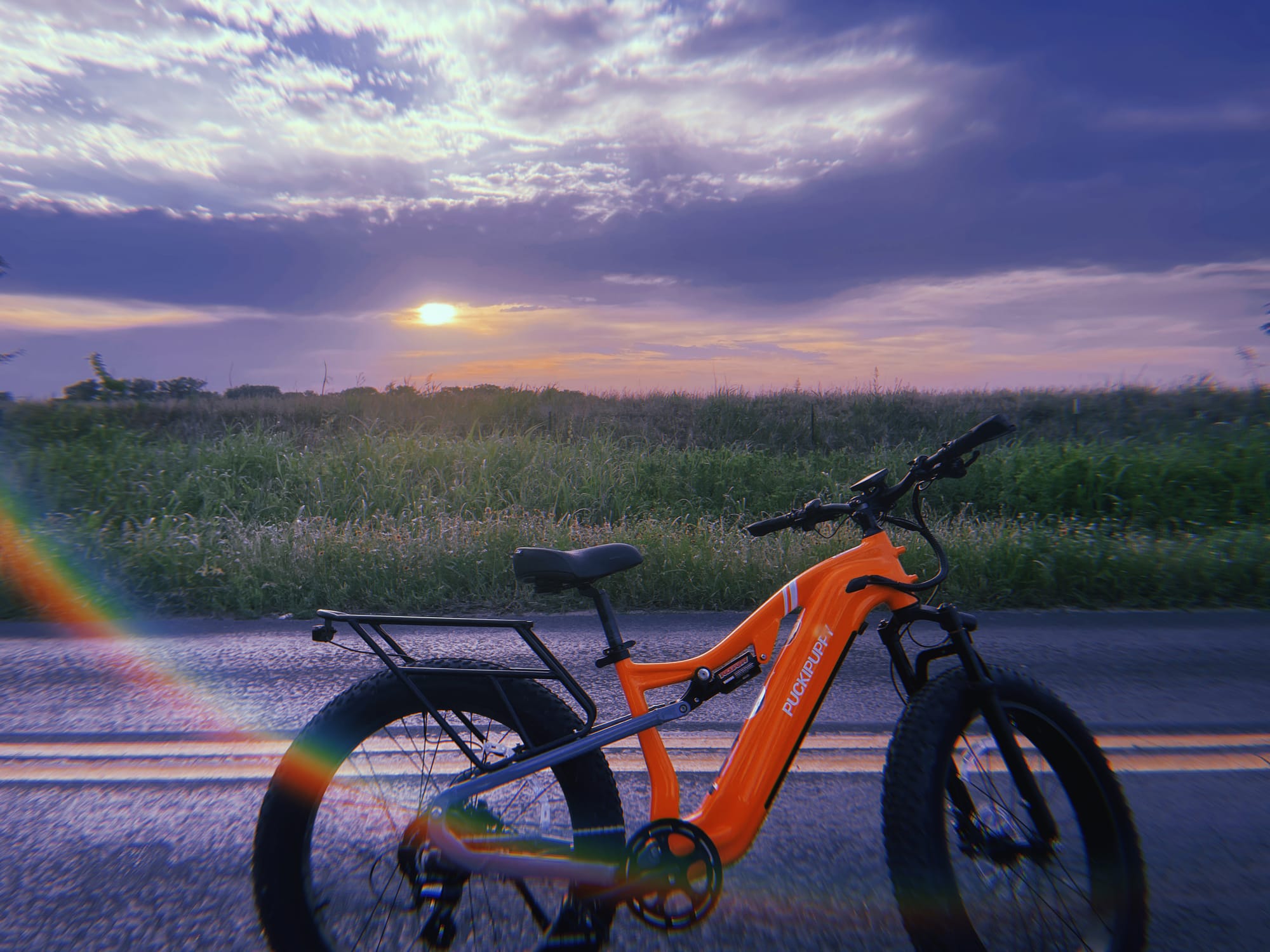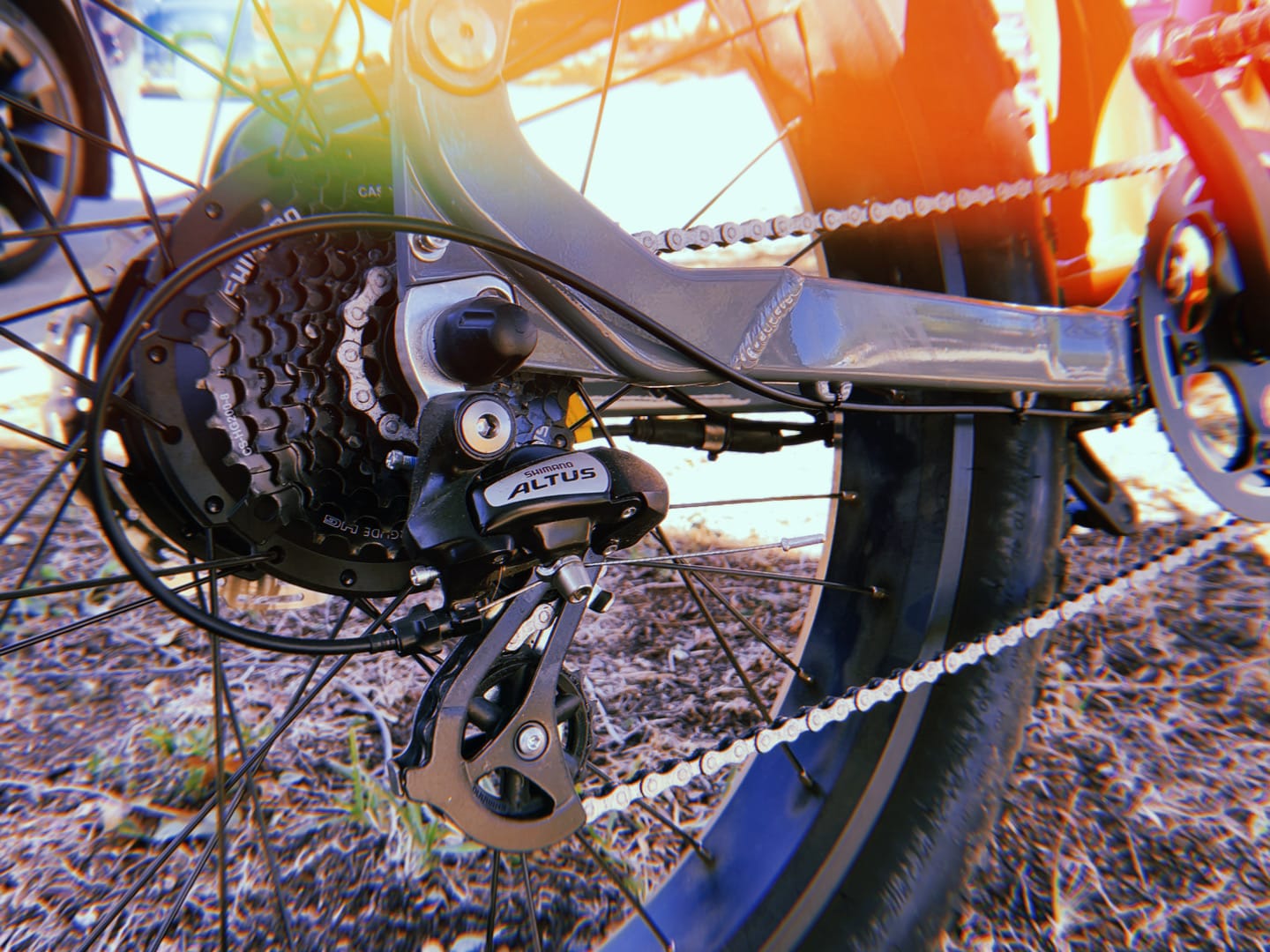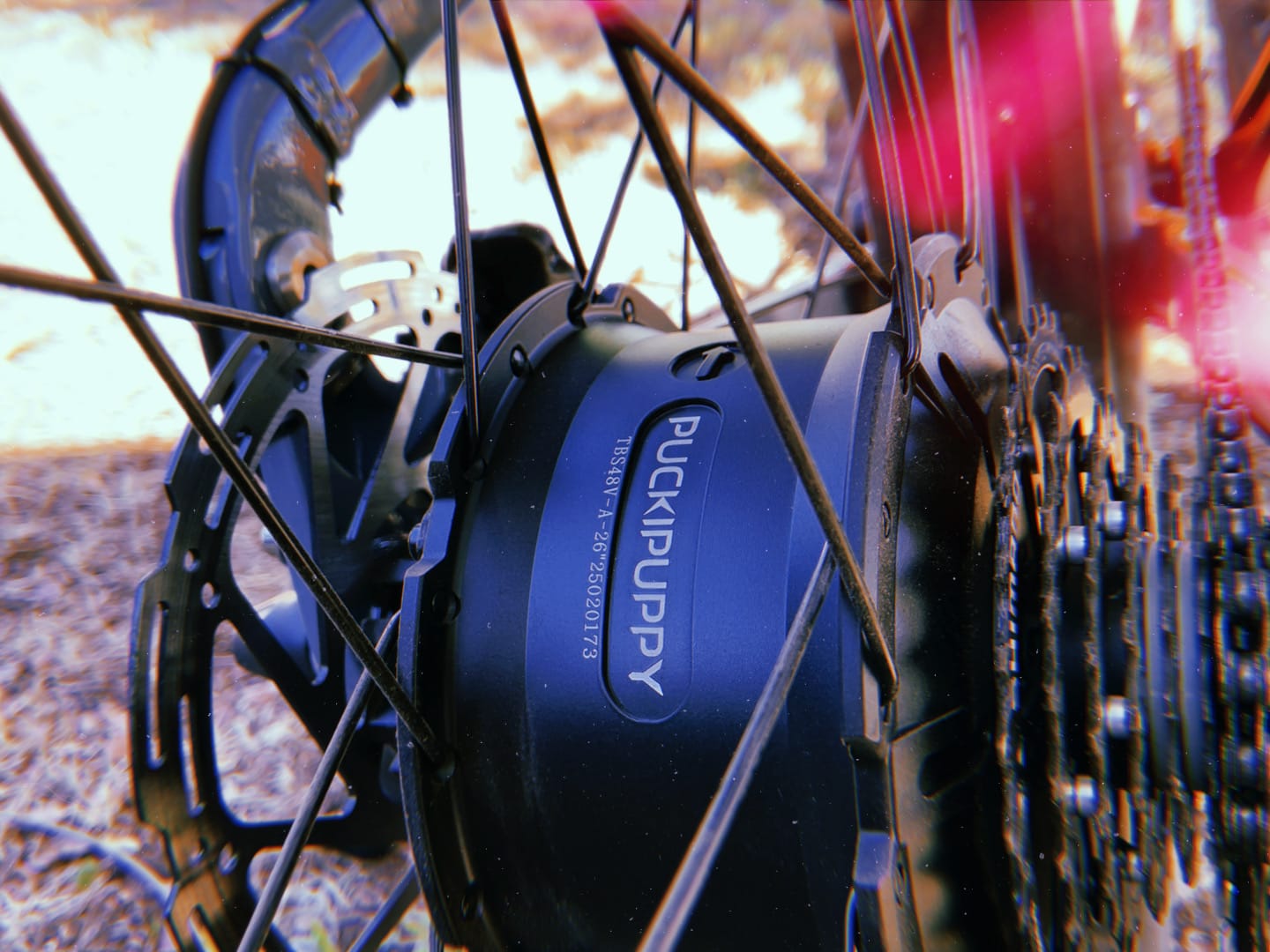Review: Puckipuppy Labrador Pro
I bought a knock-off product from an upstart Chinese company thanks to an Instagram ad. It's the best purchase I've made in years.

Stop me if you've heard this one before: I bought a knock-off product from an upstart Chinese company thanks to an Instagram ad. It was half the price of similar stuff from well established brands, shipping was free and a long-time warranty was assured in broken English. Two weeks later, it arrived at my house in pieces and even after riding it for the last few months I'm still not sure if I put it together correctly.
It's the best purchase I've made in years.
If you want a quick, comfy, fat-tire Class 3 that handles city streets and dirt connectors, the Labrador Pro is a ton of bike for the money. Torque-sensor assist feels natural, range is legit for daily use, and the Shimano bits mean any shop can wrench on it. The unknown is long-term brand support because if the battery/controller dies, let's pray the warranty is real. Here's my review.

The Verdict
If you're looking for a stylish, mid-range e-bike with solid range and comfort for city commuting and light trail use, the Puckipuppy Labrador Pro is a solid deal. If you're just curious about electric bikes this is a pricey start but any electric bike is a blast to ride. With eighty miles of range and a solid suspension, this is a do-it-all bike: commute to school/work, hit the trails for an afternoon workout and it'll still have juice to take you around town on errands. Plug in overnight and do it all over again.
Who This Bike Is For
This bike is perfect for commuters and weekend explorers. I could see this being a great way to travel to work if your commute is under twenty miles or so. It's great at handling pretty much any terrain, so you can jump from street to back roads to shortcuts without any stress. It's modular too, so you can throw on a rear rack and a basket to give it a bit more utility; perfect for running errands after work. If you're only sticking to the streets, the fat tires might be overkill but because the pedal assist is so strong, you won't even notice the weight. This is a true all-rounder, I'd feel comfortable taking this on most mountain biking trails too, though the tires are too fat and the bike is too heavy for very technical stuff. The platform is tough enough to handle most conditions.
Pros
- Great power for the price, she's quick!
- Five levels of Pedal Assist settings and eight gears means you can set up the bike exactly for your ride
- Torque sensor makes electrically-assisted riding feel natural
- Fat tires makes it easy to ride on any terrain without fear
- Mechanical components are from mainline brands like Shimano so maintenance should be reasonably priced and doable by most bike shops
Cons
- Relatively new brand, long-term reliability is unknown
- If the battery, motors or controllers go bad, would the warranty hold up?
- The battery is in a prime spot for mud and water so I hope it's super waterproof
- Fat tires are heavy so you have to keep it in at least Pedal Assist 1 or 2
- Fat tires also limit some of the trails you can ride nimbly on
- If you're experienced, you'll want a more established brand because you'll probably push this platform to it's limits
Bike Specs
BrandPuckipuppy
ModelLabrador Pro
Motor1350W
Battery48V 20Ah 960Wh
Charger48V 2A
Top Speed20 mph (throttle) / 28 mph (PAS)
Range80 miles
Brakes3 mm × 180 mm hydraulic discs
Frame Material6061 Aluminum Alloy
DrivetrainDirect Mount 1–8 Speed (Black)
Weight67 lbs
Payload Capacity400 lbs
Current Price$1,649.99
Why buy a electric bicycle?
A few years ago I bought my first motorcycle after taking the Motorcycle Safety School (MSS) course. I loved my 2005 Honda VTX 1300R, a purple retro-styled chrome cruiser with forty thousand miles on the odometer. She had custom painted pinstripes, originally hailed from Pennsylvania and even after twenty years the clutch was smooth and power rolled on nicely. Painfully heavy but in motion she was effortless.
I loved it until my first Texas summer. I completely believe in needing all of the gear, all of the time, but in the south that cut down the amount of days I wanted to ride by 90%. I started thinking about this term, "time to value", and I felt that cycling gave me a much faster "time to value" over motorcycling. I want to grab my bike, make sure she's safe to ride and hit the road. No other prep needed. I bought a cheap Walmart mountain bike for casual rides and it was a ton of fun. But I wanted something with a little more oomph.
Different Classes of eBikes
Honestly these classes only matter if your local cops care about how fast you can go on the street without a license and plates. But just keep in mind that trails and bike paths often restrict Class 3 bikes and/or those with throttles; check your city/county rules.
Class 1 – Pedal Assist Only
- Motor only activates when you pedal
- Assists up to 20 mph
- No throttle
- Often allowed anywhere a regular bicycle can go (bike paths, trails, etc.)
Class 2 – Throttle-Assisted + Pedal Assist
- Can be powered by a throttle without pedaling
- Max motor-assisted speed: 20 mph
- Good for casual cruising or riders who need help starting from a stop
Class 3 – Throttle-Assisted + Pedal Assist, but faster
- Same as Class 2, but the motor-assisted speed is 28 mph
- If speed matters to you, these are ones you want.
Puckipuppy?
It's memorable so I'll give kudos to the branding team. All of their models are named after dog breeds - I landed on the Labrador Pro because it was Puckipuppy's first model that had a torque sensor for the pedal assist system, which makes the responsiveness of the bike feel more natural. The moment you start to pedal, electric power kicks on, and the more effort you put in, the more assist the bike gives you. The alternative are bikes with cadence sensors, which are low tech and cheaper.
Setup & Build

Total Setup Time: 3 Hours
Tools Needed: Hex Key, screwdrivers
Delivery was a week after I placed the order; a giant, impossibly heavy box was dropped off in my driveway. I couldn't even move it into my garage which meant that I had to put it together outdoors. Not fun in a Texas summer but it's a good way to burn calories through dehydration. It was straightforward enough to assemble and most of the bike was already put together. All of the various pieces came separated by Styrofoam and were well labeled.
I had to install the front wheel, connect the electrical components and brake controls to the handlebars, attach the handlebars to the frame and charge up the battery. It took a few hours. The only pain point, due to my own lack of experience, was getting the brake disc to fit snugly within the brake pads on the caliper. If you don't, you'll hear this awful squeaking sound as you ride around because the disc will constantly rub up against the brake pads. It's annoying and you're wearing down your brakes on every ride for nothing.
There's several bolts on the calipers - I loosened those up, engaged the brakes to get the pads aligned, then tightened again. It took an embarrassing amount of time to get right though I'm the exact opposite of handy so it's doable for anyone.
Here's a good video if you get stuck:
Design & Aesthetics

This is beautifully designed bike; the frame looks chunky and very "mechanical". The fat tires give it a nice presence. The orange and gray color palette is loud but it makes the Labrador Pro feel special. I love the clean look of blacked out bikes but there's something to be said for a little soul. It reminds me of Kaneda's bike in Akira.
The Labrador Pro has 26.0" x 4.0" Fat tires which give the body a nice balanced look. It's also got a front and rear light which are pretty bright. The front light is low to the ground though so you have to orient it properly. It also comes with a rear rack and fenders which were easy to install. For a random brand, I have to say the fit and finish is pretty solid. The Puckipuppy absolutely feels like it's worth the money, maybe a little bit more. Each piece of the frame feels solid and basic stuff like the pedals are good enough.
Comfort & Fit

The saddle is nice and squishy, pretty adjustable. Just make sure to really tighten up the bolts, it kept slipping out of position for me on longer rides and that was frustrating. The riding position is good though - I feel comfortable and at 5'9" I can reach the pedals easily and my arm position feels good. The suspension has a shock absorber and I can attest to the fact that you can ride it hard and it'll hold up pretty well. I've taken it on some wild trails around town and it's done well on big drops and hard climbs.
Handling & Braking

Despite the chunky tires and battery weight, it's pretty nimble. The battery is heavy but it sits low so you don't feel like you're fighting the weight. In slow speed maneuvers however, especially on Pedal Assist 0 or 1, the fat tires feel cumbersome and I've tipped over a few times when I didn't keep it balanced. Brakes are great - never had an issue with stopping power.
I've taken it around my neighborhood which has a mix of street, gravel, country roads, dirt trails and miles of mud. It's handled every condition very well, and the moment I hit a road that feels a little tough for the bike, I can increase the Pedal Assist and change my gears and I can power through anything easily.
Because the bike is so quick and responsive, I don't freak out when I hit a bunch of gravel for example and lose all traction - I can drop a couple gears and push my way through. I'll even use the bike rack above the rear seat to pick up packages and bring little things with me to the local park. I haven't bought a bike basket yet but that'll unlock another dimension of usefulness.
I've ridden her through a few puddles and all seemed fine but I don't want to goof around and find out. The battery sits low in the frame but it feels waterproof and tight. I've cleaned the bike a few times after some rough rides and all is functional.
Pedal Assist System (PAS)

This bike has a torque sensor as opposed to a cadence sensor, which means that it gives you more electronic assist based on how hard you're pedaling. It's not immediate power but within a second or two of pedaling, power will flow through the bike and move you forward. It's really cool and reminded me of surfing in several ways. The higher your pedal assist level, which goes from 0 to 5, the more power flows into the wheels and the faster you go.
Bikes with cadence sensors are still good, it's just that the responsiveness of a torque sensor, which increases power proportionally to how hard you're pedaling, feels more natural.
Hub Motors vs. Mid-Drive Motors

This bike has a 'hub' motor, which fits into the center of the rear wheel. It's more common on budget electric bikes. On the flip side you've got mid-drive motors which are set into the frame of the bike. This leads to better balance and a smoother delivery of power but are typically more expensive. Puckipuppy doesn't have any bikes with mid-drive motors. If you're looking for a good mid-drive bike, Santa Cruz has some of the best, especially the Marlin, Trek and Vala series.
Throttle
There's a throttle button on the left side of the handlebars which gives you a one-second surge of power regardless of whether or not you're pedaling. It's a Boost button if anything though. I've found it useful when when I have to cross busy roads quickly from a complete stop and when I'm pushing uphill and running out of steam.
Display / User Interface

The display is bright and easy to read. You've got three buttons to navigate the user interface - it is not a touch screen. To turn on the display, you hold down one of the buttons for a few seconds, it'll display a welcome screen and then land on your speedometer. On this main screen, you can increase your pedal assist from 0 to 5. The screen is responsive and after one or two pedals, I can feel the change take place. You can hold down the buttons to enter a Settings mode, where you can increase the max-speed of the bike, which is limited to 28mph as a Class 2 eBike. I can promise you that you don't really want to be on a bicycle going 40+ mph. It'll burn on the battery and this suspension isn't built for extreme speed.
Cockpit controls are straight forward too:
Speed, Range & Battery
In most traffic scenarios, going on trails or offroad, even pushing uphill or downhill; this thing feels quick. Yes, there's a 28mph limit; once the bike hits that speed it won't give you more power, it'll just keep you at that point.
With Pedal Assist off, you really feel how heavy the tires are and low-speed maneuvers can be tricky occasionally. When you have Pedal Assist on, especially level 3+, it just feels fun. You immediately feel this push of power in the wheels, just like when you're surfing and you feel the water and the energy surging behind you to push you forward. And because the bicycle is so much lighter than a motorcycle, it's no nimble and easy to throw around, even with the fat tires.
Even after using it for days in a row and for several hours at a time, I haven't run out of battery once. The Puckipuppy website says the range is about a hundred miles and I'd believe them. Even with max pedal assist, I haven't pushed the battery to it's limits. Here's the annoying thing though - I have no clue what the battery percentage is, this isn't displayed on the user interface. You have to remove the battery from the bike and plug it into the charger to see how much charge it's got, there's a little power meter on the side.
Charging Time
10 hours to a full charge is normal with this bike and a standard charging time for most electric bikes.
There's two ways to charge the battery - by removing the battery from the bike frame and plugging the charger directly into it, or by plugging the charger into the bike frame itself, which is connected to the battery. Both work pretty well, though you can only see the charge status on the battery block itself, which means it needs to be removed from the frame.
Swappable Battery?
The 15ah battery is swappable since you can remove it from the bike frame. Puckipuppy sells new batteries on their website for $500. The cost of the bike was about $1500, so that's a third of the cost on a new battery. But overall, still a reasonable price. The battery is easy to remove - there's a place to use a key and then the battery will slide out of the frame.
Security (key, lock, tracking)
There's no security features on the bike: no key, no security app, no theft sensors. There is a lock on the battery which is good, but a thief just needs to turn this thing on and ride away. To be fair, I wouldn't trust any sort of security system on a cheaper bike - who knows where your data is going. Nothing wrong with a good old fashioned AirTag - it'll serve most purposes and there's plenty of places to discreetly place it. Would recommend that as an easy way to keep control of the bike.
Maintenance & Serviceability
To be updated.
What Those Specs Mean
Motors: The power output of electric motors is measured in Watts (W). Watts (W) = Volts (V) × Amps (A). Volts = the “pressure” of electricity. Amps = the “flow” of electricity. Think of water pipes and you get the idea. Ultimately more watts means more power baby! With more watts the bike has a higher top speed, faster acceleration and it's easier to climb hills. Most commuter eBikes deliver about 250W-750W so 1350W is pretty dang good.
Battery: Voltage (V) affects how much power the motor can draw on from the battery. Higher voltage means higher speeds because more power can flow into the motor at once. In the hierarchy of electric bikes, 48V is middle of the pack. Bikes from solid brands like Aventon are 36V. Top tier bikes in 2025 have 52V batteries. Part two of battery stats is the capacity of the battery (i.e. fuel-tank size), measured in amp hours (aH). Part three of battery stats is watt-hours, or the total energy stored. Watt-hours is voltage multiplied by aH. Watt-hours is the best number to determine how powerful the battery is.
Charger: Voltage has the same meaning here as above: how much power the charger can pull from its power source continuously (typically a wall outlet). The amp rating is the charger’s maximum output to the battery. A charger can give X amps at Y voltage. In this case, 2amps at 48V, which means it can deliver 96W of power an hour. The Labrador Pro's battery has a capacity of 960Wh, so it would be 10 hours to a full charge.
Controller: Not mentioned above but good to know, a controller is essentially the brain of the system. It manages the flow of power between the battery, motor, and other components to make the bike ride smoothly and safely. When you increase Pedal Assist levels on your LCD display, the controller is what actually enables more power to flow from battery to motor. This controls speed and torque. The voltage rating of the controller must match the battery voltage. If the voltage rating of the controller is too low, the battery has got more power than the controller can handle and it'll fry. If the controller's voltage rating is higher than the battery, it won't work properly because it isn't getting enough juice to operate properly.
All of this math sounds like black magic but you get the idea. The bigger the numbers, the better the bike, the more expensive it is. As with most things in life, this is kind of true. More money doesn't always mean better, so check the stats. Go for a test ride if you can.

Subscribe to get updates on new content, merch, events and more from Sendō Worldwide. You'll get one email a week at most.
Check out some Research: our free collection of training plans, workout guides, nutrient-dense grocery lists, pace calculators, and other tools to support your quest.
Browse the Online Shop for apparel, accessories and training books to equip yourself for the path ahead.
Have a tip, story, or idea? It could end up in a future post. Email me anytime with questions, thoughts, or even confessions — we're all in this together.






